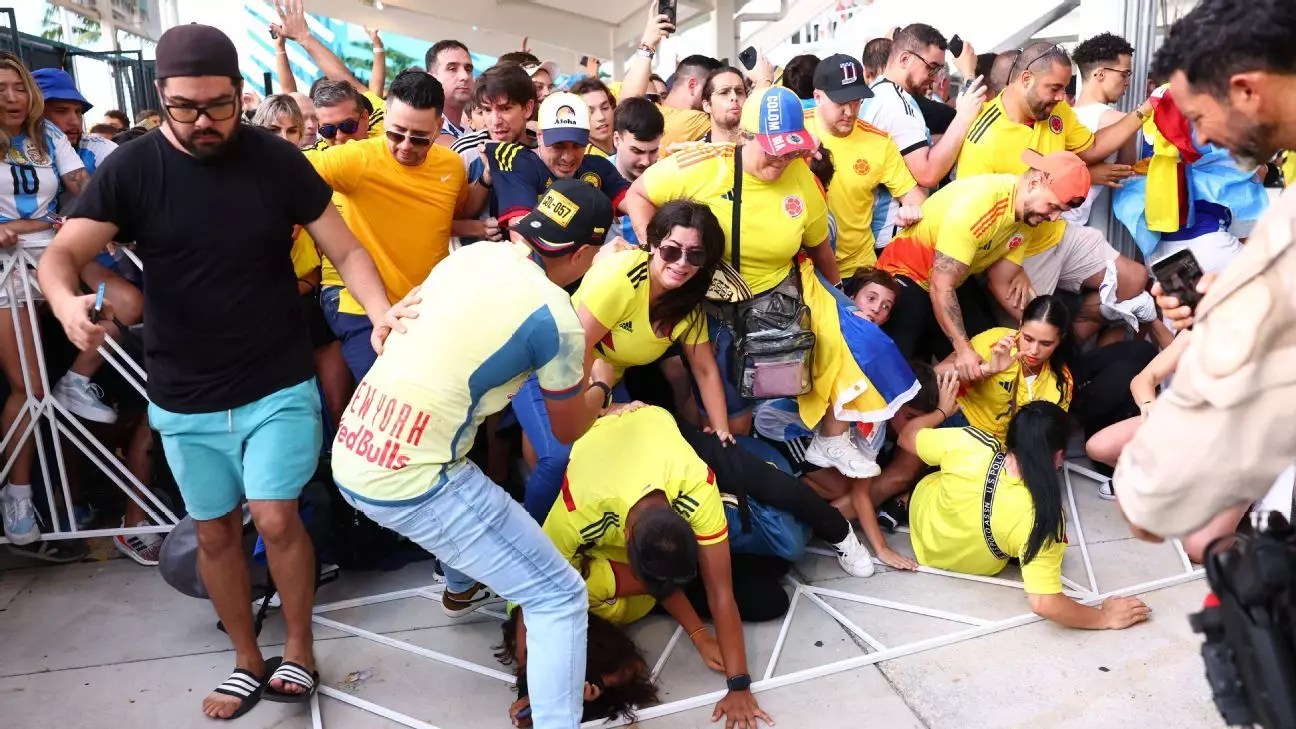The recent chaos that ensued at the Copa América final between Argentina and Colombia at the Hard Rock Stadium in Miami Gardens, Florida, has led to a blame game between the stadium authorities and the CONMEBOL organizing body. Despite the presence of over 800 law enforcement officers and reportedly exceeding security recommendations, the uncontrollable situation of ticketless fans forcing their way into the stadium highlighted the failures in crowd control measures.
CONMEBOL, as the organizing body of the prestigious tournament, expressed disappointment in the aftermath of the events that transpired at the final. Countless fans managed to breach security and enter the stadium without tickets, causing a delay in the match and tarnishing the integrity of the event. The organization pointed fingers at Hard Rock Stadium for not adhering to their security recommendations, leading to a breakdown in crowd management.
While Hard Rock Stadium defended its security protocols, stating they exceeded CONMEBOL’s recommendations, the chaotic scenes that unfolded during the final called into question the effectiveness of their preparations. The stadium has a history of hosting major sporting and entertainment events, yet the passionate nature of international soccer fans caught them off guard. The decision to allow some fans in without proper security checks further exacerbated the situation.
Event safety expert Steve Adelman highlighted the failure of organizers to anticipate the intense emotions and behaviors of fans attending the match. Drawing parallels to past incidents, such as the 2021 European Championship final at Wembley Stadium, where unruly fans breached security, Adelman stressed the importance of planning for the expected crowd dynamics. The aggressive behavior displayed by a subset of fans was foreseeable and should have been addressed with more proactive crowd control measures.
The aftermath of the chaos revealed significant damage to the venue, with images and videos circulating on social media showcasing the destruction caused by the unruly fans. Shattered railings, strewn debris, and bent security checkpoints painted a grim picture of the turmoil that unfolded outside the stadium. The impact of such incidents extends beyond the immediate safety concerns to reputational damage and financial implications for the venue and organizers.
With the upcoming prospect of hosting World Cup matches in 2026, it is imperative for authorities and organizers to reevaluate and enhance their security protocols. The need for better crowd management strategies, advanced surveillance technologies, and seamless coordination among stakeholders is crucial to prevent similar incidents in the future. As international events draw diverse and passionate crowds, the focus on safety and security cannot be understated.
The chaos that marred the Copa América final serves as a stark reminder of the challenges faced in ensuring effective event security and crowd control. While the blame may be shared among various parties, the critical lessons learned from this incident must inform future decision-making processes. By prioritizing safety, communication, and preparedness, organizers can create a secure environment for spectators and participants alike, fostering a positive and memorable experience for all involved.


Leave a Reply